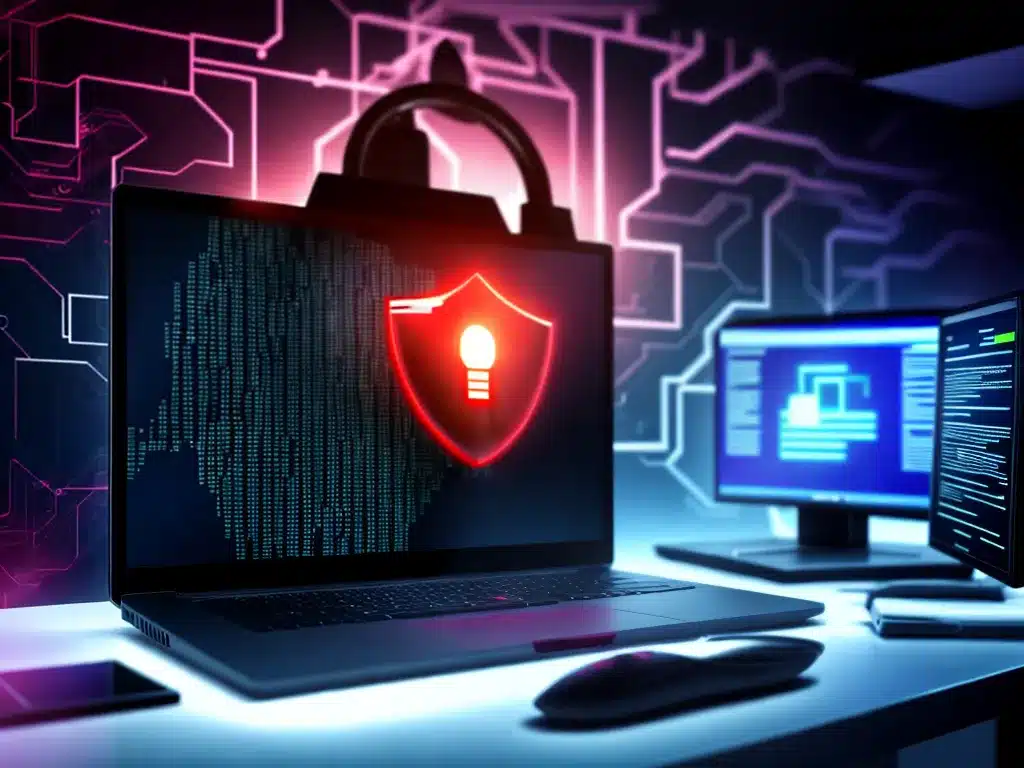Introduction
Ransomware is one of the most significant cyberthreats facing individuals and organizations today. As a malicious software that encrypts files on a device or network to extort money from victims, ransomware can cause tremendous disruption and financial damage. In 2024, ransomware remains a highly active threat that is rapidly evolving, but there are steps we can take to reduce the risk and impact of attacks. In this guide, I aim to provide an in-depth look at understanding, preventing, detecting, and responding to ransomware in 2024 and beyond.
Understanding Ransomware
To effectively defend against ransomware, we must first understand how it works and evolves. Some key points about the nature of ransomware:
-
Encryption of data – The goal is to lock up critical files and data so they cannot be accessed without paying a ransom. Powerful encryption is used.
-
Extortion for money – Criminals demand ransom payments from victims, often in cryptocurrencies, in exchange for decryption keys. High costs are aimed at businesses.
-
Evolving tactics – Advanced ransomware uses tactics like anti-detection, anti-analysis, multi-stage attacks, and more to improve success.
-
Ranges from targeted to broad – Some ransomware is targeted, while others spread more indiscriminately.
-
Constantly adapting – New variants, exploits, obfuscation, and infrastructure improvements make ransomware resilient.
Understanding the motivations and methods of ransomware developers can inform our defense strategies.
Preventing Ransomware Infections
The ideal scenario is preventing ransomware from ever infecting systems and networks. Some key prevention measures include:
Utilizing Strong Email Security
- Email is a primary infection vector. Use services that block malicious attachments, links, impostor emails.
- Employ user education on email risks and response. Teach identification of threats.
- Limit macros and executables from running unverified attachments.
Keeping Software Up-to-Date
- Prioritize patching known vulnerabilities that enable exploits. Focus on OS, browsers, email clients.
- Use the latest software versions; avoid outdated, insecure applications.
- Update antivirus and malware definitions frequently. Enable real-time protection.
Using Secure Passwords and Multi-Factor Authentication
- Weak passwords enable brute force attacks and credential theft. Require strong, unique passwords for all users and admins.
- Enable multi-factor authentication (MFA) everywhere possible, particularly for remote access.
- Use password managers to generate and store passwords securely.
Securing Endpoints and Networks
- Protect endpoints with next-gen antivirus, firewalls, detection capabilities. Isolate and segment networks.
- Disable macros, limit execution permissions. Block unnecessary scripting.
- Close RDP/ports when not needed. Monitor traffic for anomalies.
Detecting Ransomware Activity
If prevention fails, early ransomware detection is critical to limit damage. Detection approaches include:
- User behavior analytics – Analyze patterns like unusual file encryption for indicators of attack.
- Signature-based detection – Recognize known indicators based on ransomware signatures.
- Anomaly detection – Identify abnormal spikes in read/write activity, network traffic, CPU usage.
- Honeypots – Use isolated systems to attract and detect ransomware behavior.
- Active scanning – Actively scan systems and memory for indicators of compromise.
- Threat intelligence – Leverage feeds with known ransomware IPs, hashes, domains.
- Endpoint detection and response (EDR) – Advanced EDR can detect and stop ransomware actions.
Quickly identifying ransomware activity is essential to contain impact.
Responding to Ransomware Events
If ransomware evades prevention and detection, rapid and effective response is critical:
- Immediately isolate infected systems to prevent spread. Disable Wi-Fi and ethernet connections.
- Determine scope of infection – which systems, networks, or devices are impacted.
- Check for data backups – Identify backup status and restore process for encrypted files.
- Consult incident response plan and notify management and IT staff per plan instructions.
- Report attack to authorities and consider sharing threat intelligence with industry partners.
- Do not pay ransom if avoidable, as it encourages and funds criminals without guarantee of restoring data.
- Wipe systems fully and restore data from clean backups where possible.
- Launch a forensic investigation; analyze logs, system artifacts for insights.
- Remove initial infection vector and harden security to prevent a repeat.
- Support impacted users. Keep communications empathetic, transparent, and frequent.
Protecting Data With Secure Backups
Reliable, air-gapped backups can enable recovery of encrypted files after a ransomware attack. Best practices include:
- Maintain regular, automated backups of all critical data. Test restoration.
- Keep multiple backup versions over time in case of delayed detection.
- Store backups offline and immutable to prevent encryption or deletion.
- Diversify backup types – physical, cloud, offline data warehouses.
- Ensure backup security, encryption. Require MFA access to backup systems.
- Test backups frequently via sample restores to validate integrity.
Isolated, encrypted backups are a last line of defense against ransomware data loss.
Ongoing Vigilance Against Evolving Threats
Ransomware is constantly adapting, so defense requires ongoing vigilance:
- Educate users frequently as new social engineering tactics emerge.
- Ensure device hygiene – delete unneeded apps and data, patch diligently.
- Keep emergency response plans current, conduct practice runs.
- Continuously monitor systems for vulnerabilities, suspicious behavior, anomalies.
- Maintain software currency and regularly test security controls.
- Utilize threat intelligence feeds to stay ahead of known threats.
- Conduct penetration testing to find weaknesses before criminals do.
- Make cyber resilience a daily discipline and priority across the organization.
With advanced preparation, vigilance, and action, we can reduce ransomware to a manageable threat. But it requires making security a habit, not an afterthought.
Conclusion
Ransomware remains a clear and present danger to organizations and end users in 2024. By taking proactive steps to prevent, detect, and respond to ransomware threats using the techniques outlined here, we can become far more resilient. Ransomware defense requires combining technological protections with ongoing education, testing, threat monitoring, and an adaptable incident response plan. With strong fundamentals, organizations can defend their critical systems and data against ransomware and limit damage in the event of any attacks that get through. Staying informed on the evolving ransomware landscape while hardening infrastructure and response plans will enable effective defense against this prominent threat now and into the future.












